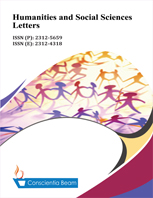An instructional model text mapping with poetry text description
DOI:
https://doi.org/10.18488/73.v12i2.3740Abstract
The Indonesian language learning method at Junior High School (SMP) Negeri Padangpanjang was generally boring and traditional. A solution is required to create products that are successful, efficient and enjoyable to use in classroom learning activities. A solution is required to make goods that are effective, efficient and entertaining to use in classroom learning activities. The product trial took place at SMP Negeri 3 Padangpanjang. The 4-D development phase was done in this study. During the conceptualization and development phases of this study, junior high school teachers and students were involved. In addition, experts participate in the process of evaluating products. A variety of methods are used including tests, questionnaires, observations and interviews. The main syntax of OMEMPAT is created by the descriptive text mapping learning model with the help of poetry text such as (1) orientation (2) reading and listening to poetry (3) mapping the contents of the descriptive text (4) presenting the results of the descriptive text mapping and (5) reflecting on the learning process. The three criteria of validity, practicability and efficacy were used to assess the quality of the learning model. The descriptive text mapping learning model which is supported by poetry texts needs to be put into practice. Teachers must create learning models that enable students to engage in educational activities while enjoying.

